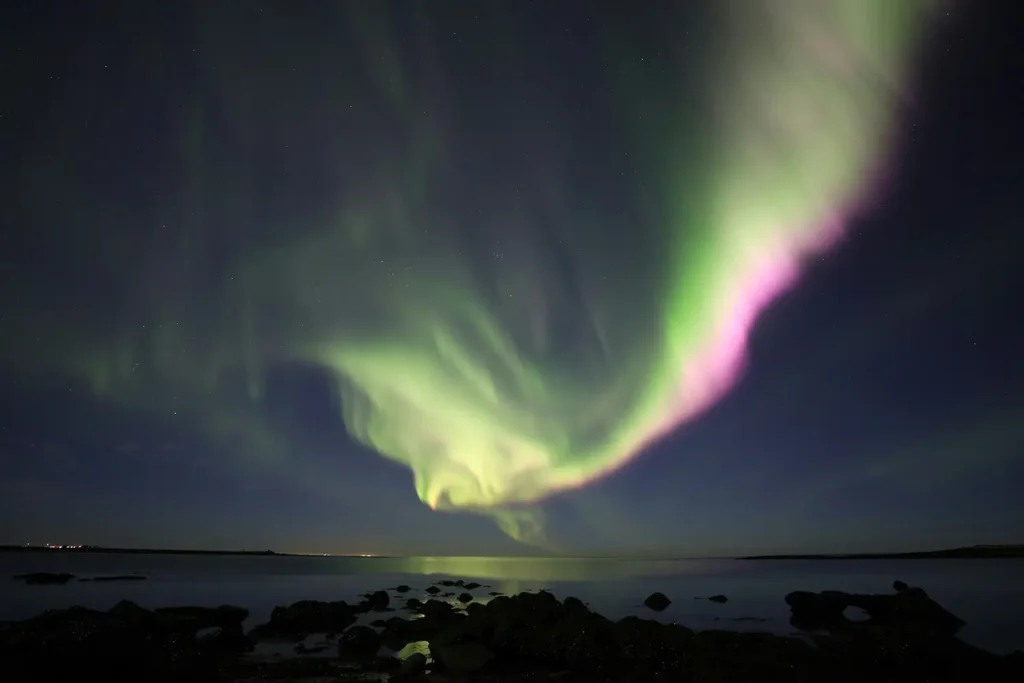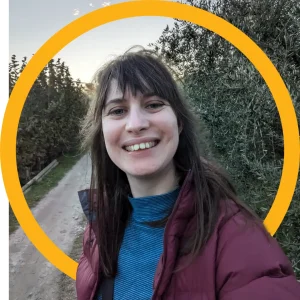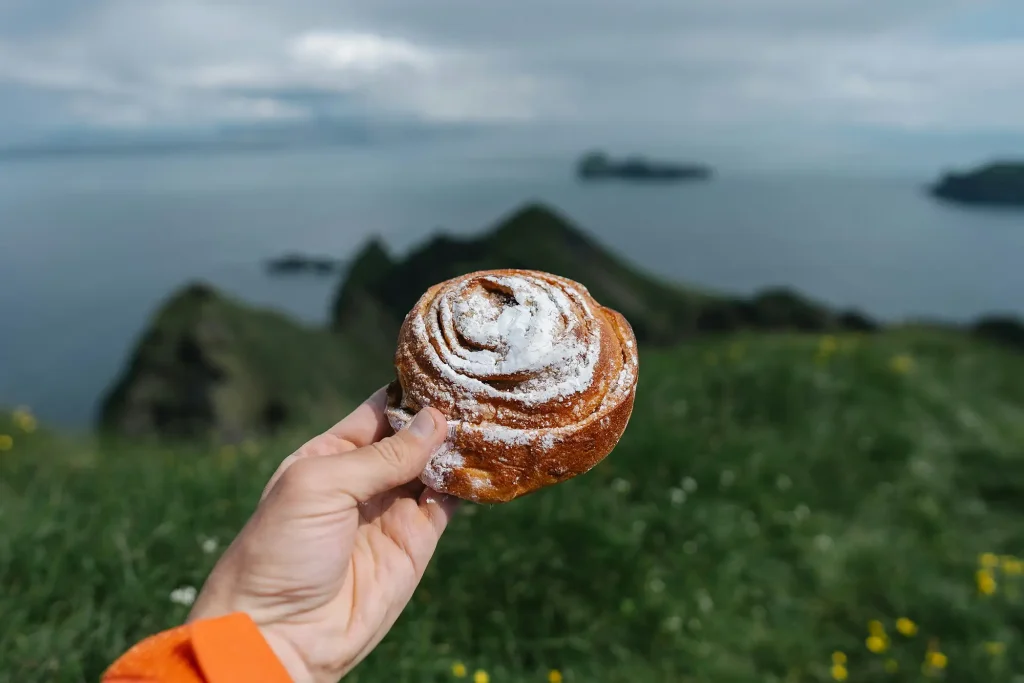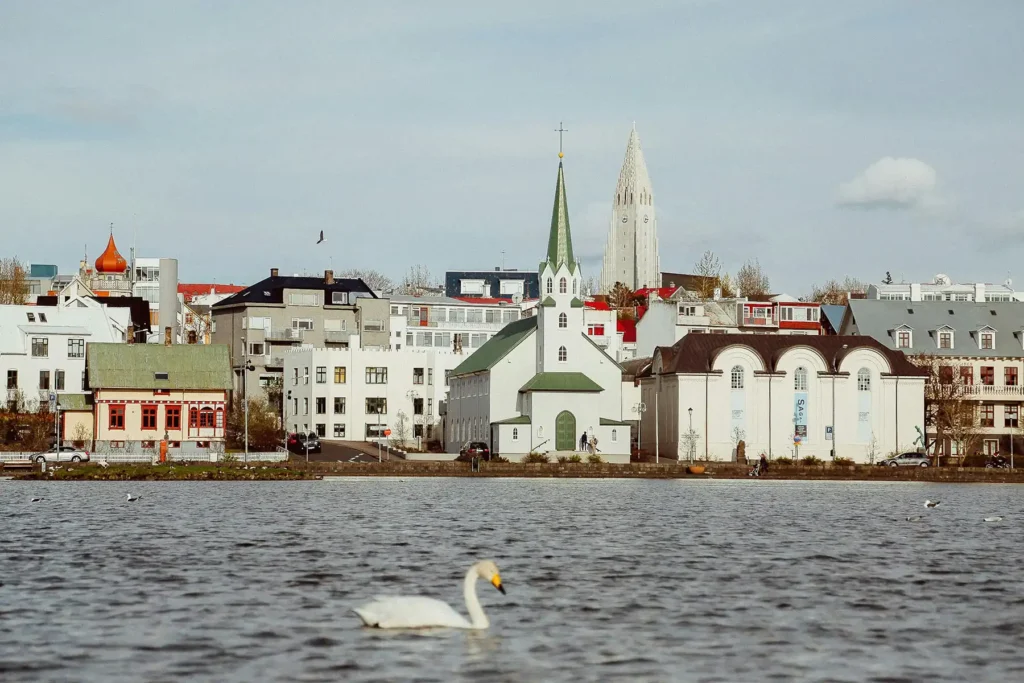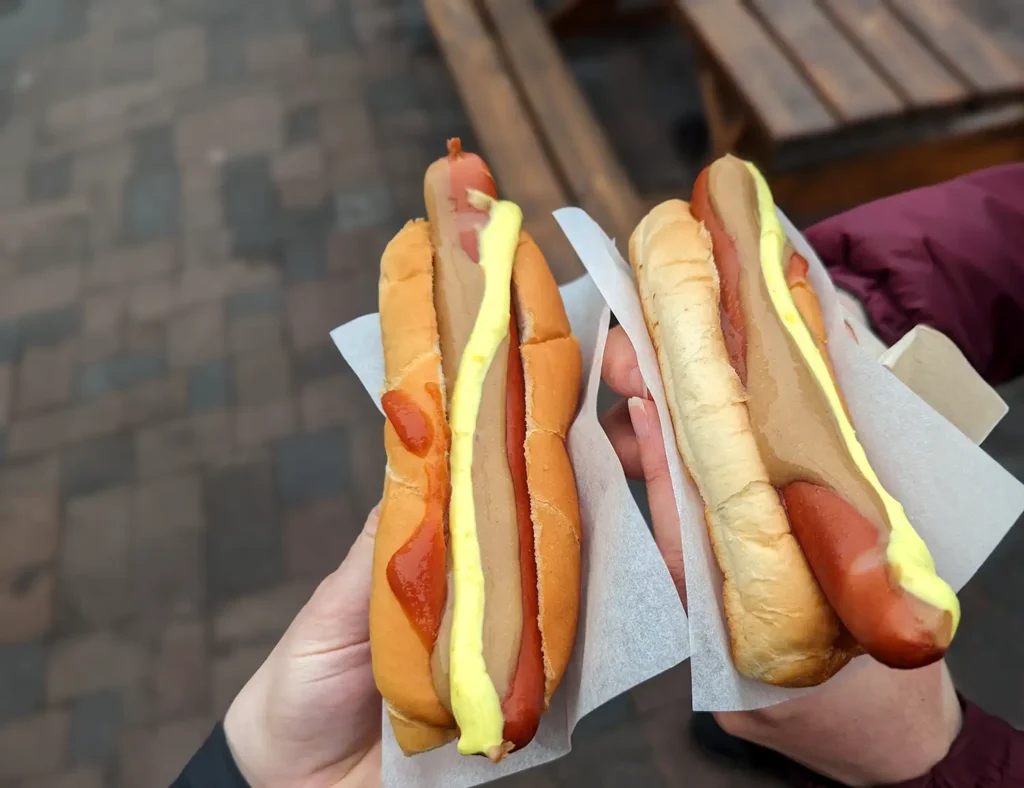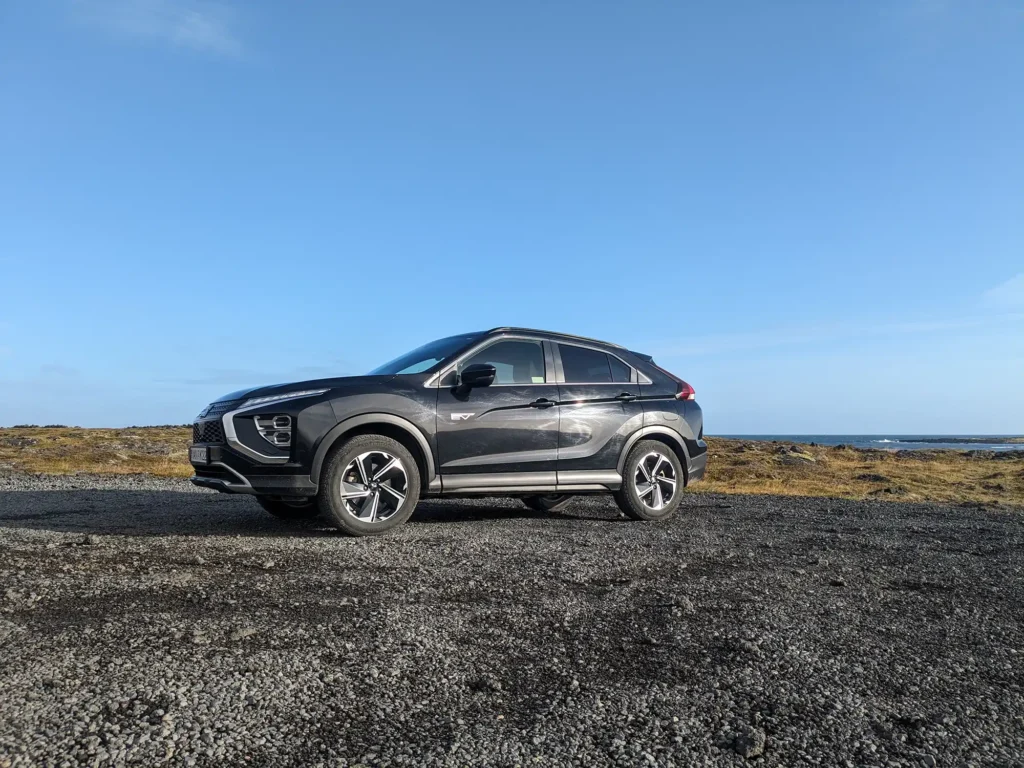What is the best time to see the Northern Lights in Iceland?
Before booking your flights, you need to understand the Northern Lights season to make sure you’re visiting at the best time of year. This was something we had researched before booking our trip to best maximise our chances of seeing the lights.
Visit around the dates of the Equinox
I must admit, although I had heard the word ‘equinox’ I had no idea what it was and why it has a connection to the Northern Lights.
In a quick summary, this is what I learnt:
Equinox means ‘equal night’ in Latin and it’s when there are equal hours of day and night being experienced across the world (roughly 12 hours of each). There are 2 equinoxes a year, occurring in Spring (March/April) and Autumn (September/October).
During an equinox, geomagnetic disturbances – that cause the northern lights – are twice as likely to occur, therefore increasing the likelihood of the auroras.
If you’re interested in learning more about the scientific aspects of the phenomenon, check out earthsky.org as they have a great article explaining it.
Visit in Winter
The second best time to visit is during winter. It’s important to note that this refers to the entire period between September and March (yes, those equinox dates again).
During Autumn and Winter, Iceland experiences longer and darker nights, increasing the likelihood of sighting the lights.
Why we chose to visit Iceland in September
The dates of our 8-day road trip were: 27th September – 6th October. Visiting in September allowed us to maximise our chances of seeing the lights by visiting during the equinox. September was also a better choice for us compared to the colder alternative, March – we Australians aren’t used to colder climates!
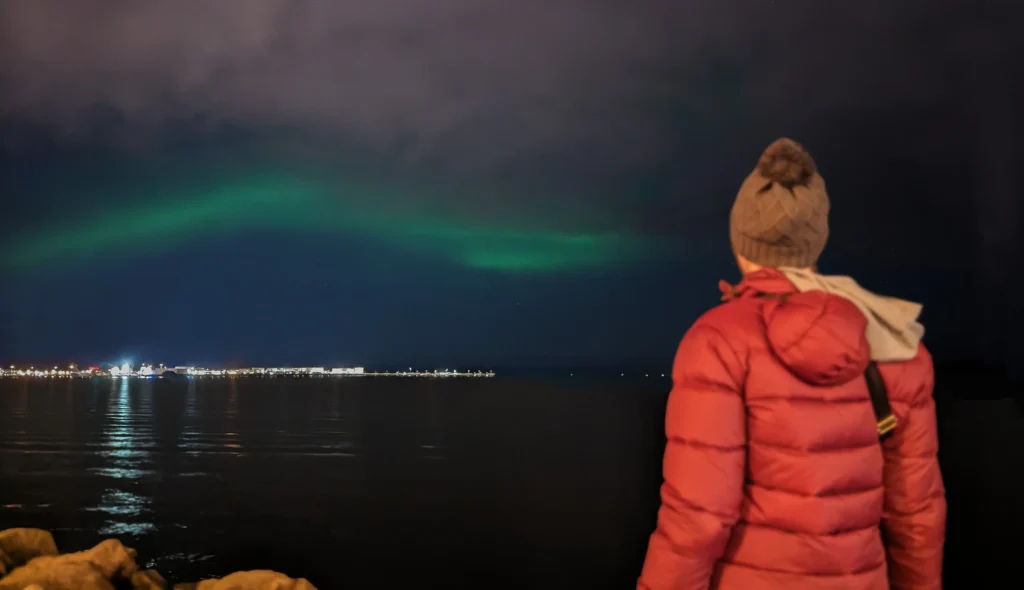
Spoiler: Other factors also determine whether the northern lights can be seen
Unfortunately, alongside the time of year, other conditions need to align including:
- The level of magnetic activity
- The level of light pollution
- Clear skies
- Solar Wind conditions
Luckily we found an app that summarises all of these factors.
The app we used: Hello Aurora
A quick reminder that this is not sponsored, it’s our own opinion on how this app worked for us.
We found the Hello Aurora app through a Reddit recommendation. The app provides a live aurora forecast and the ability to connect with other aurora hunters. But the main selling point for us was how easy it was to understand compared to other apps and websites that use more confusing terminology.
Is Hello Aurora free to use?
Yes, they do have a paid version of the app but we just stuck with the free version. To use the app you do however need to make an account (email address required).
How to use Hello Aurora:
When opening the app you will see real-time data. If you’re like we were and don’t understand the science around the information, don’t worry they provide a clear summary. The important stats are the percentage chance of seeing the lights and the Aurora Strength (this is like golf scoring – a lower score is better).
The map view shows the current cloud cover and pins for where they have recently been sighted.
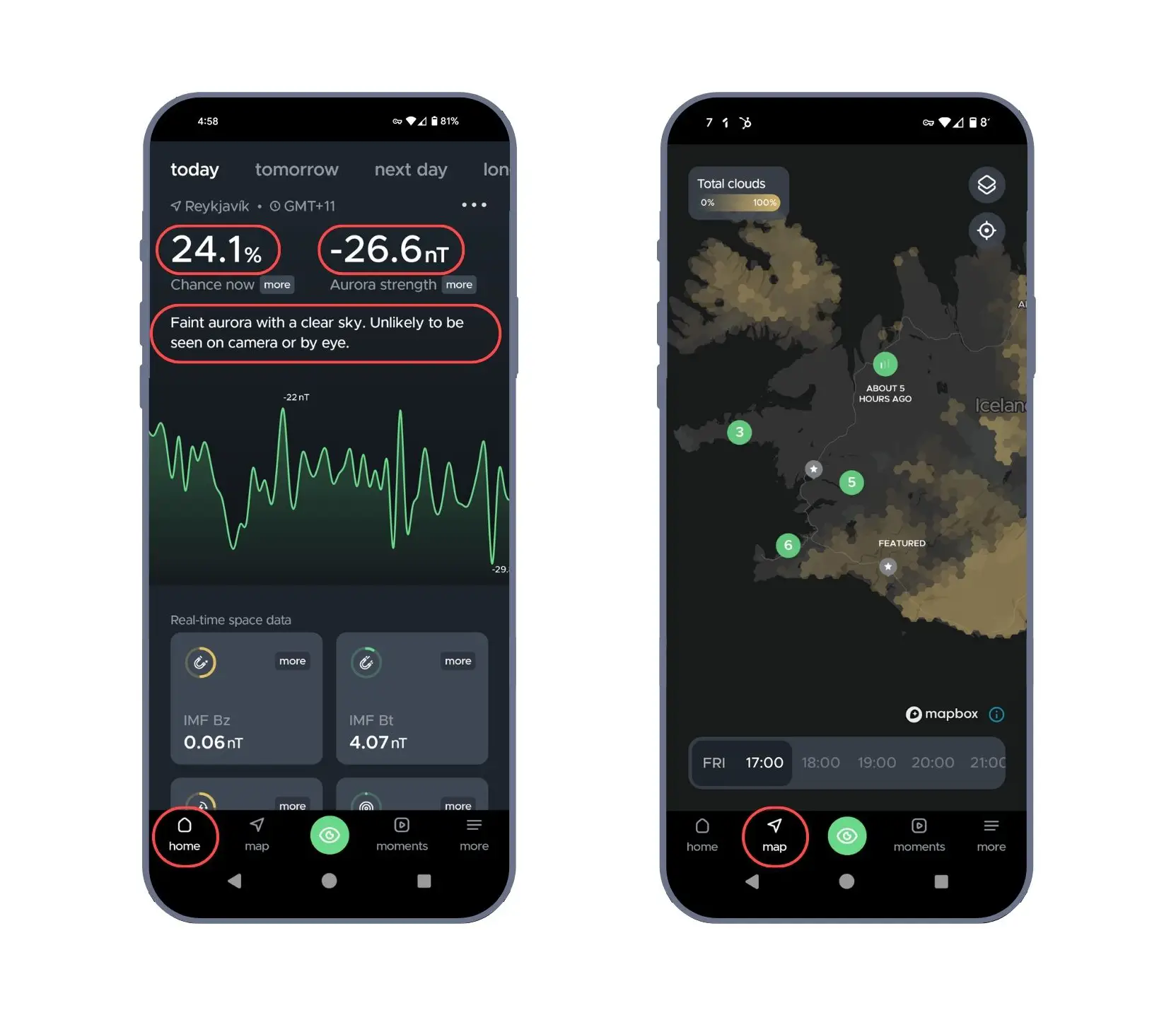
Note: Even if the stats are considered ‘low’ or ‘poor’ it doesn’t mean it’s impossible to see the lights.
Check out the Hello Aurora website here: https://hello-aurora.com/
Or download the app now for ios or Android
Turn the notifications on: this is how we saw the Northern Lights in Reykjavik
When you arrive in Iceland make sure you turn on the notification settings (select ‘more’ > ‘notifications’ > ‘Iceland’ – for all three categories).
You will then start receiving notifications updating you when the aurora activity has increased. You can set the notifications to a specific kilometre radius using the paid plan ($3.39 USD/month).
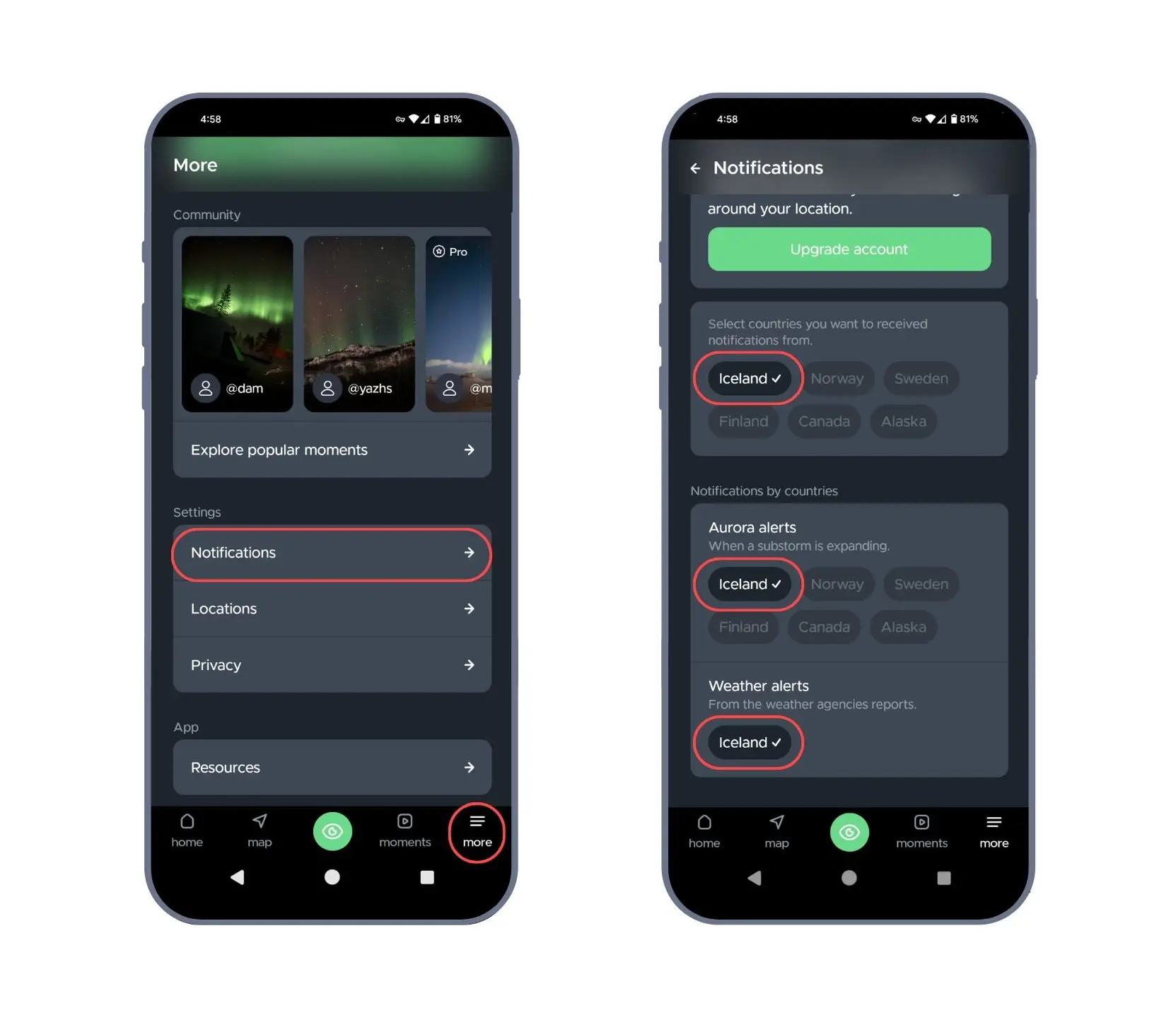
You will also receive notifications when the Auroras have been sighted – this is how we found out they had been seen close by while we were staying in Reykjavik:
We were already in bed when we received a sighting notification with a photo of the lights down at the waterfront. We quickly pulled on our layers and ran the whole kilometre. And we’re so glad we did! When we arrived at the spot we joined a group of others also looking and we finally saw them.
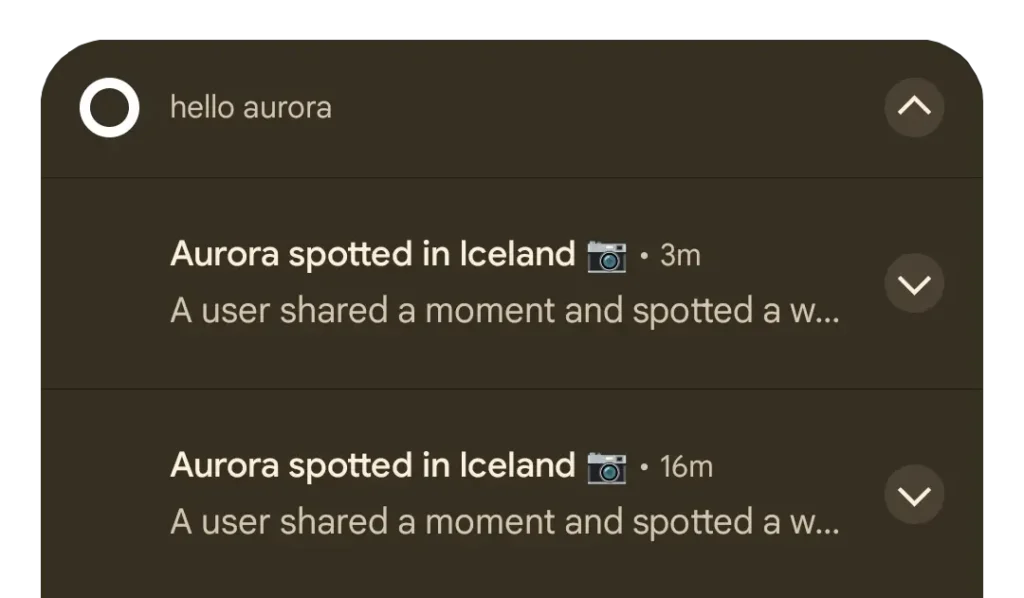
Our Experience: What is it like seeing the Northern Lights?
They’re known as a ‘mesmerising dance of colours that are magical to witness.’ And while it was a once-in-a-lifetime experience, and I’m so grateful to now say I’ve seen them, I want to be honest in that they didn’t look how I expected them to.
The one thing to know is that cameras capture the Northern Lights so much more vibrantly than the naked eye does. This was something I wasn’t prepared for.
The auroras we saw were considered weak, and alongside the partly cloudy night and light pollution from the city, it was difficult to see them. I’ve created a comparison of what we captured on our phones vs how they appeared to us.
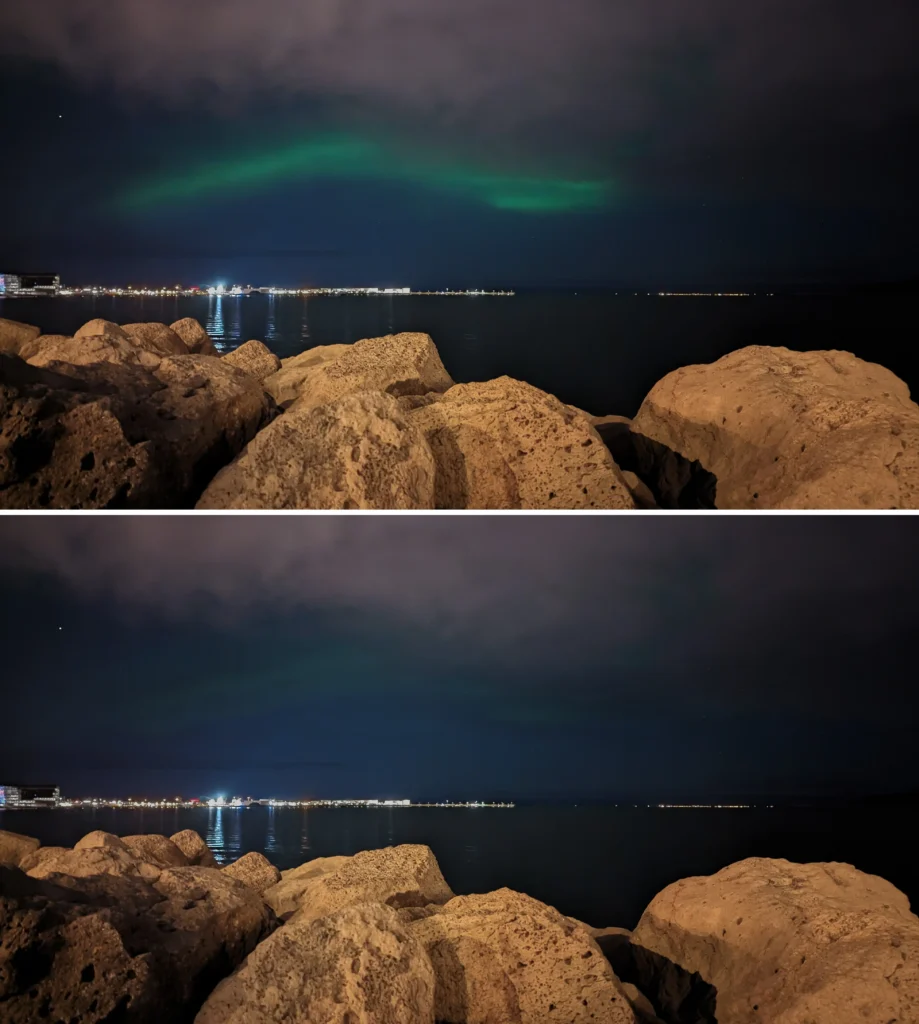
Feature Image courtesy of Unsplash
